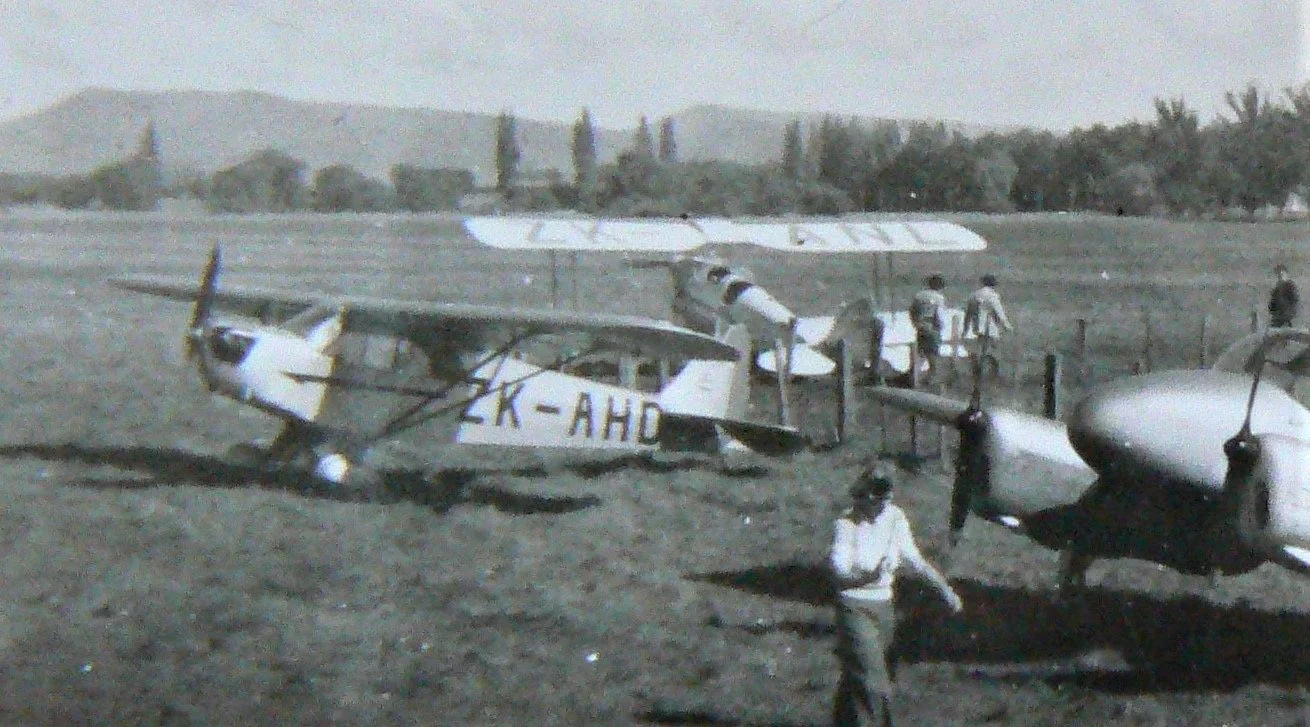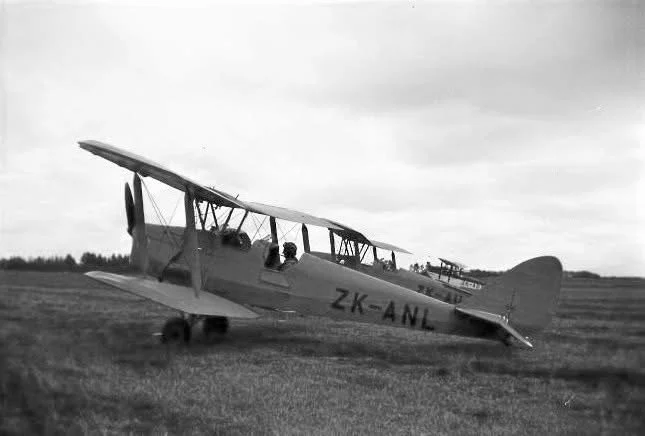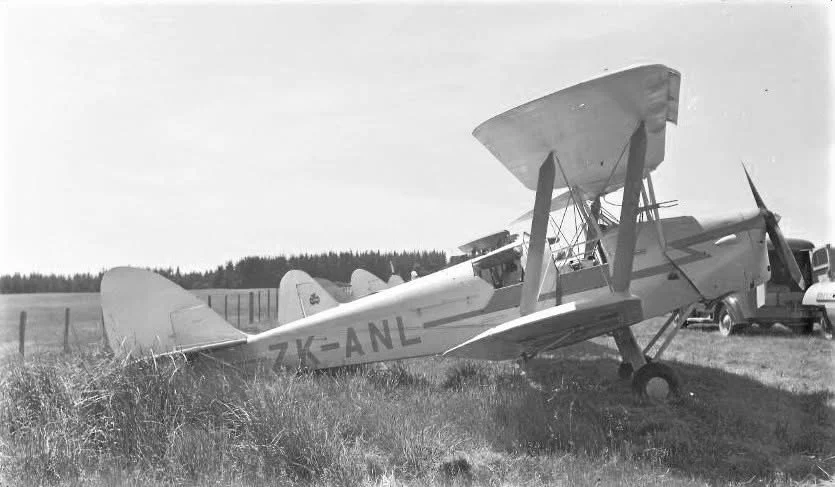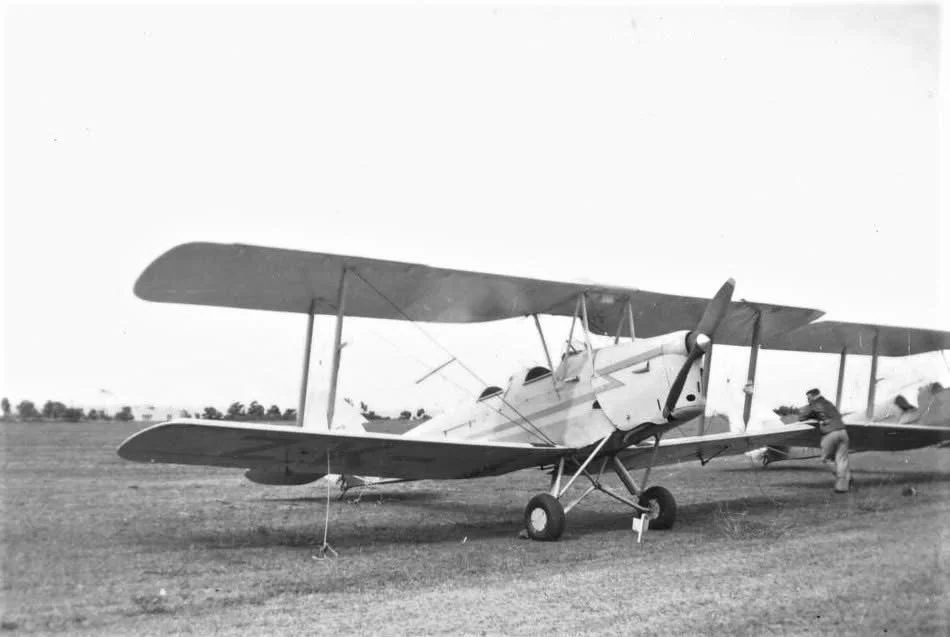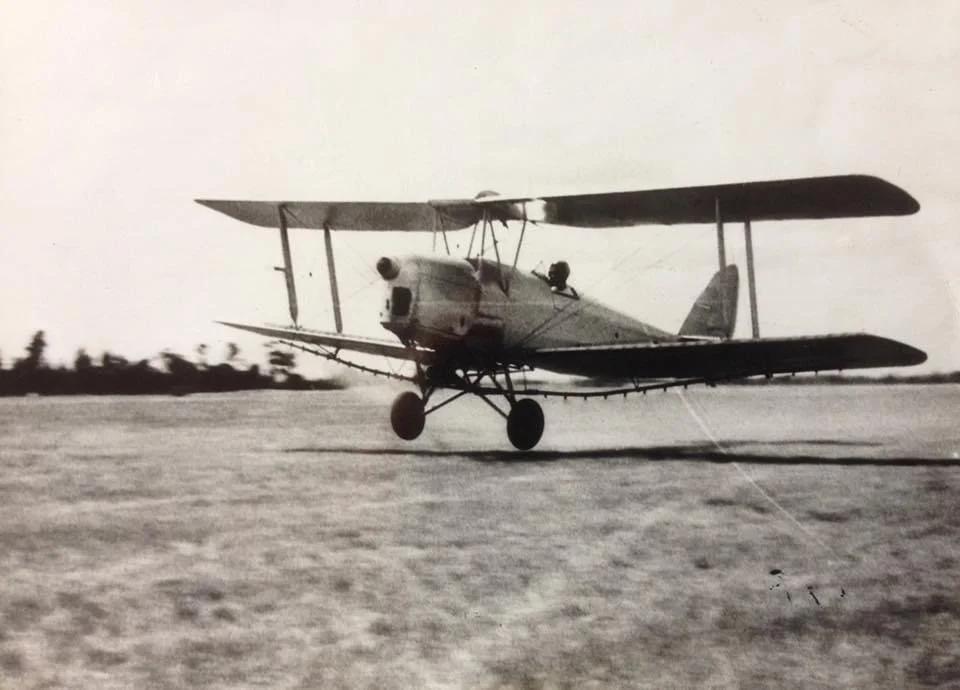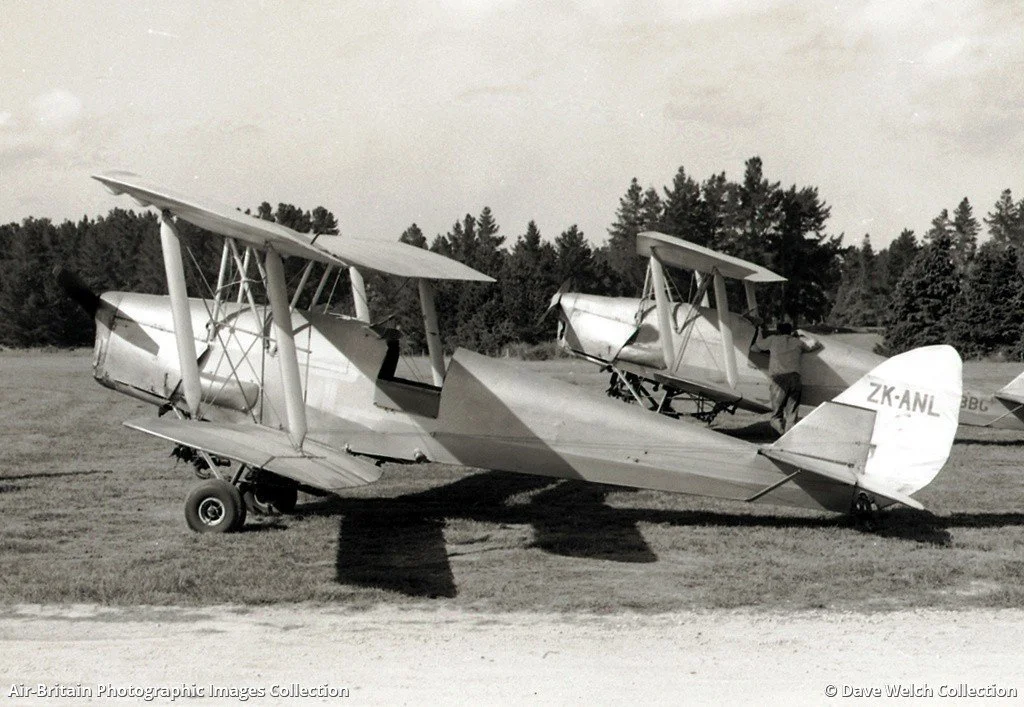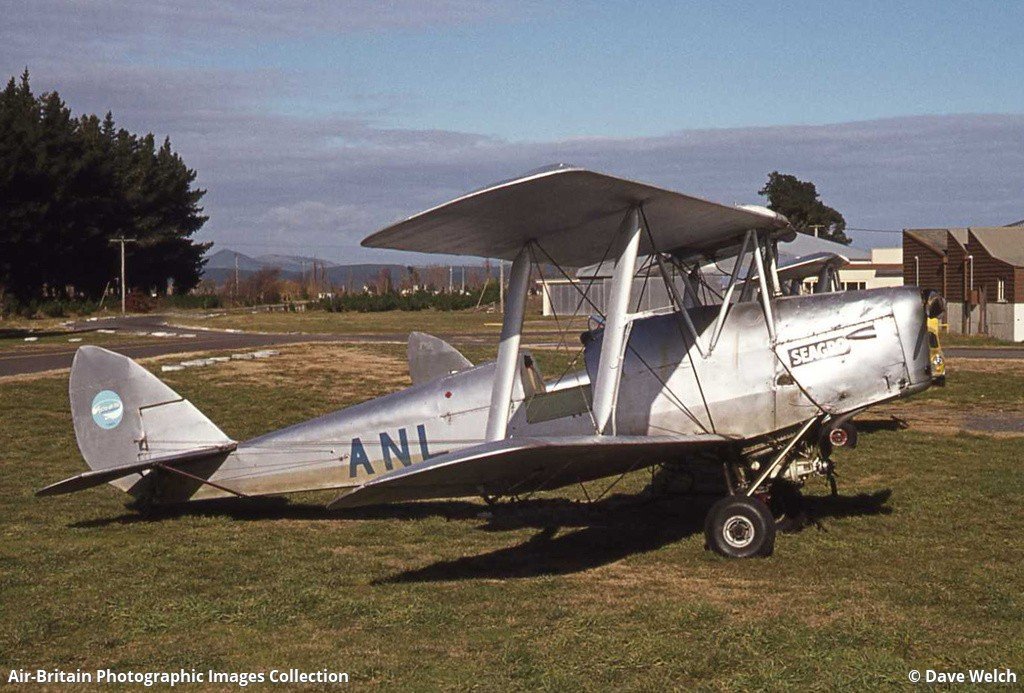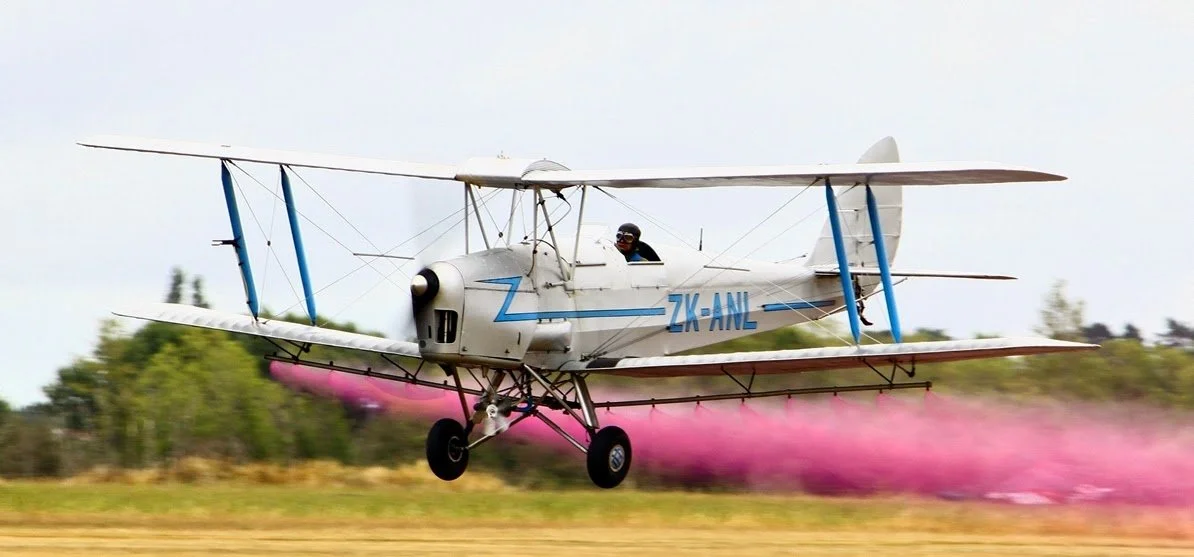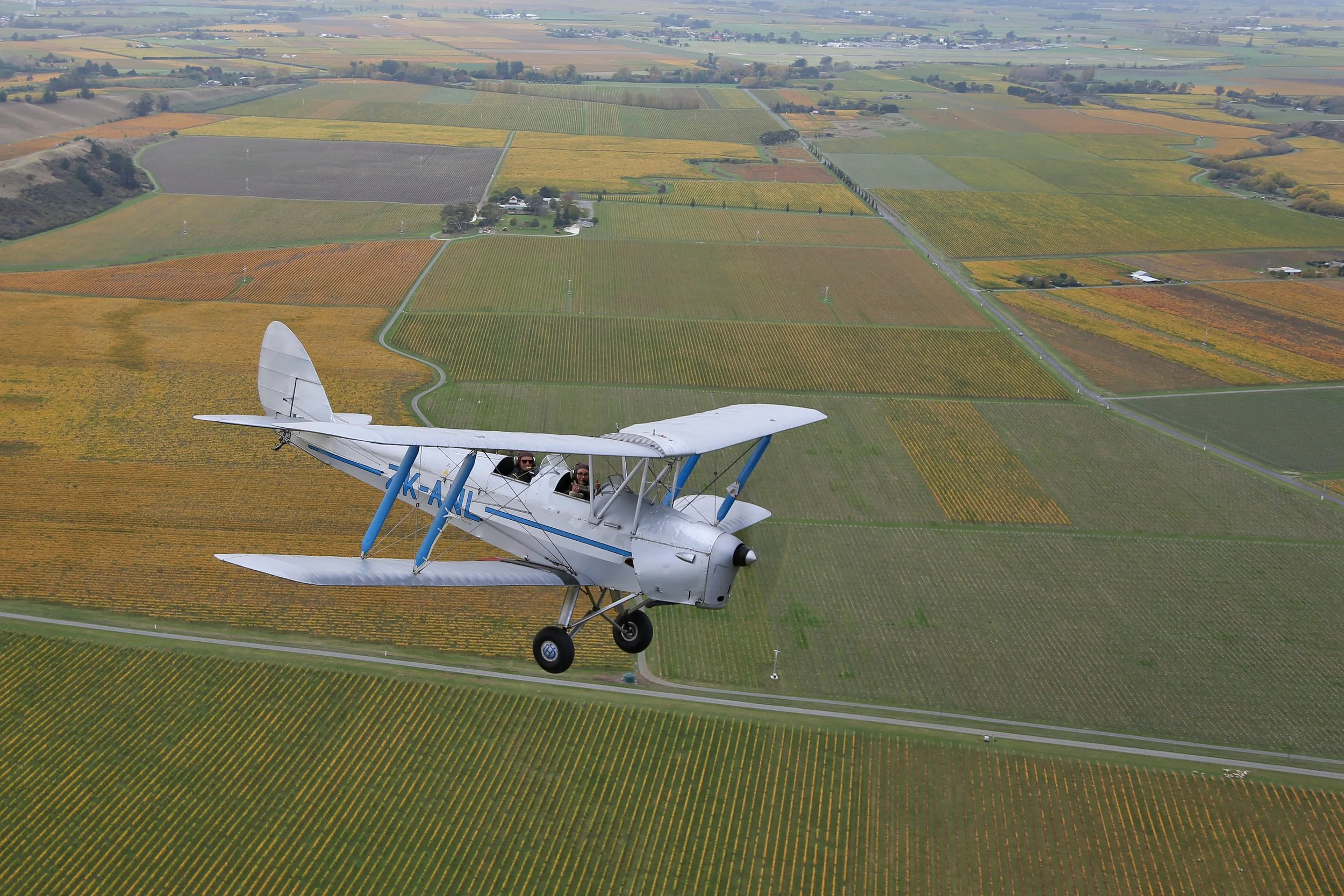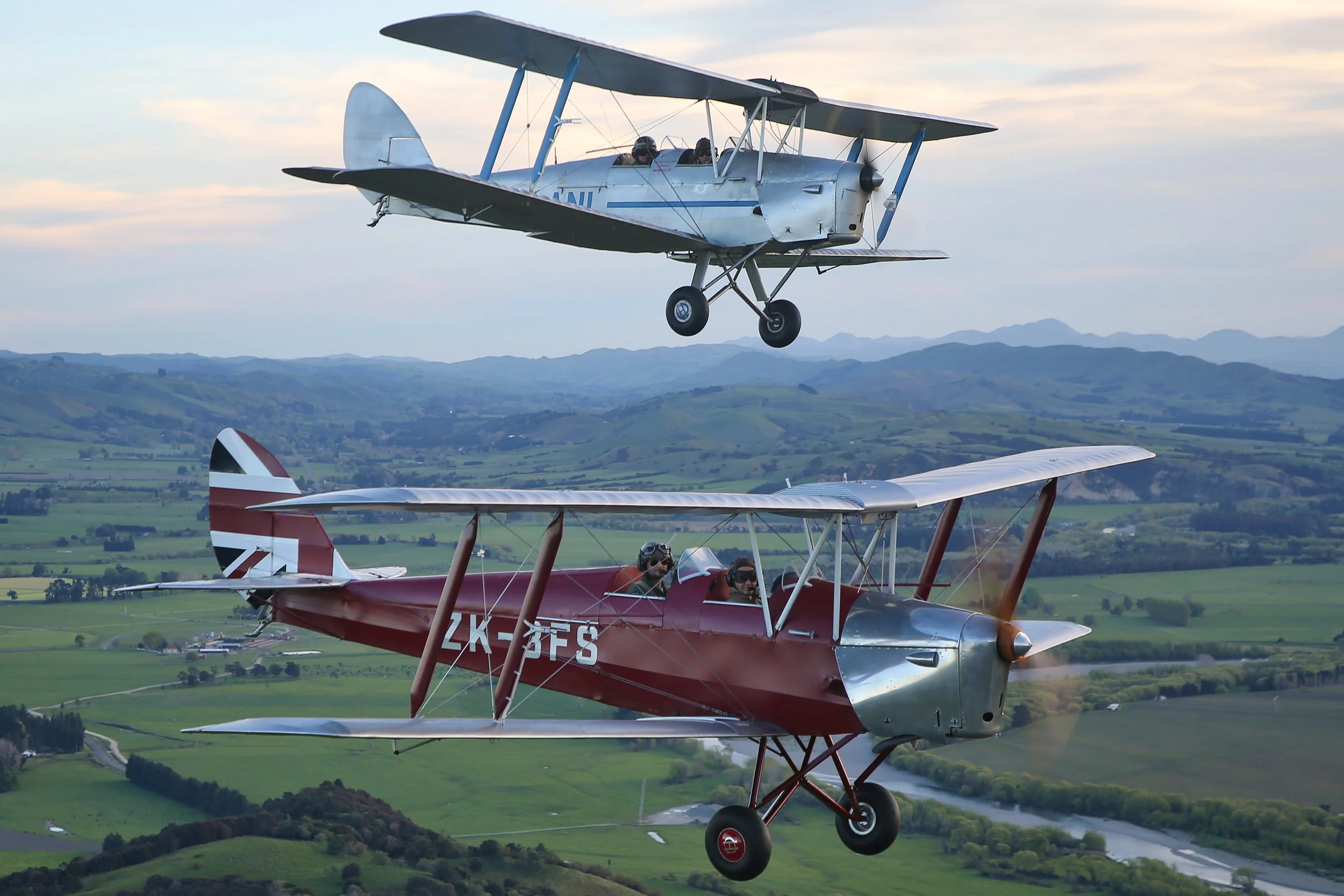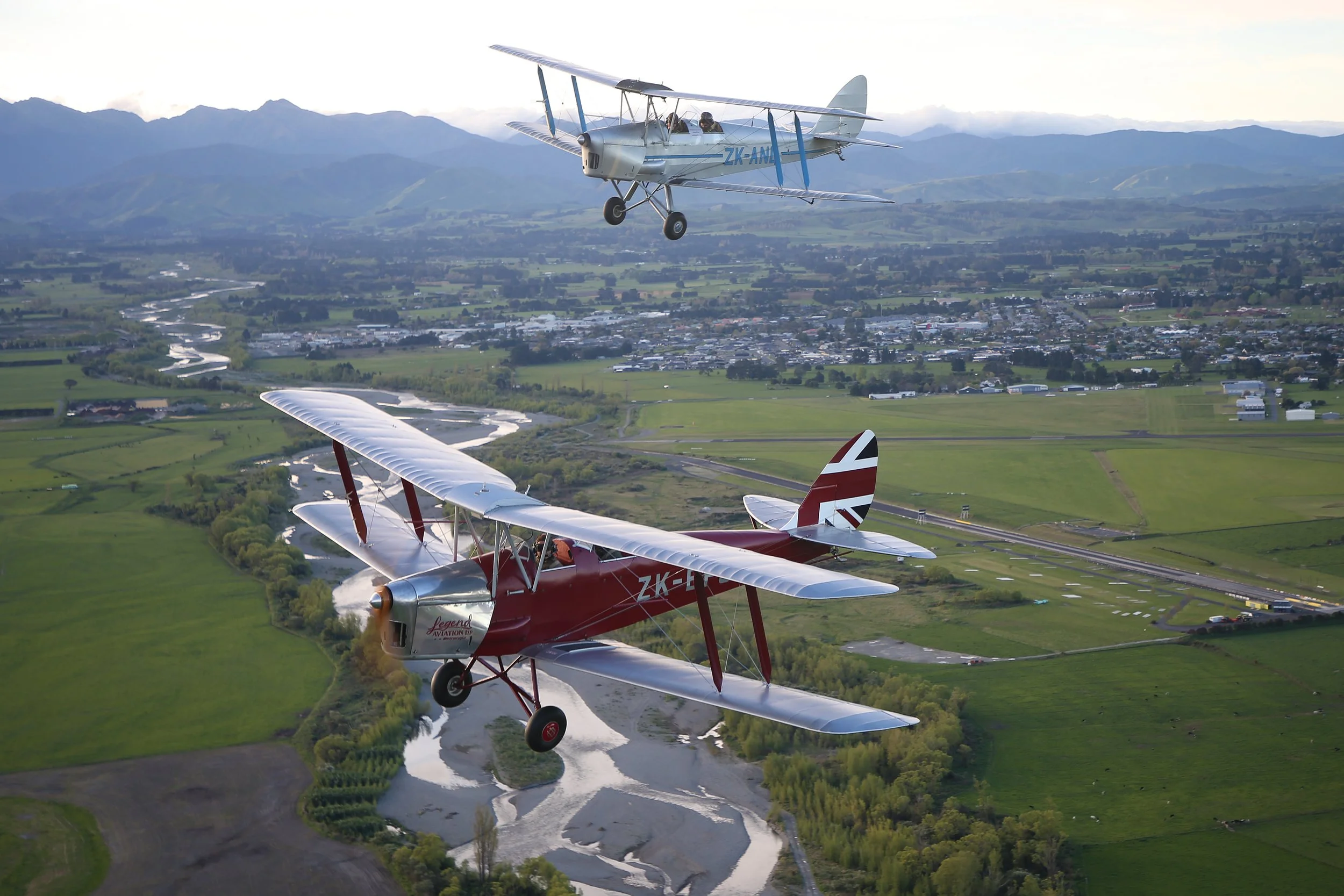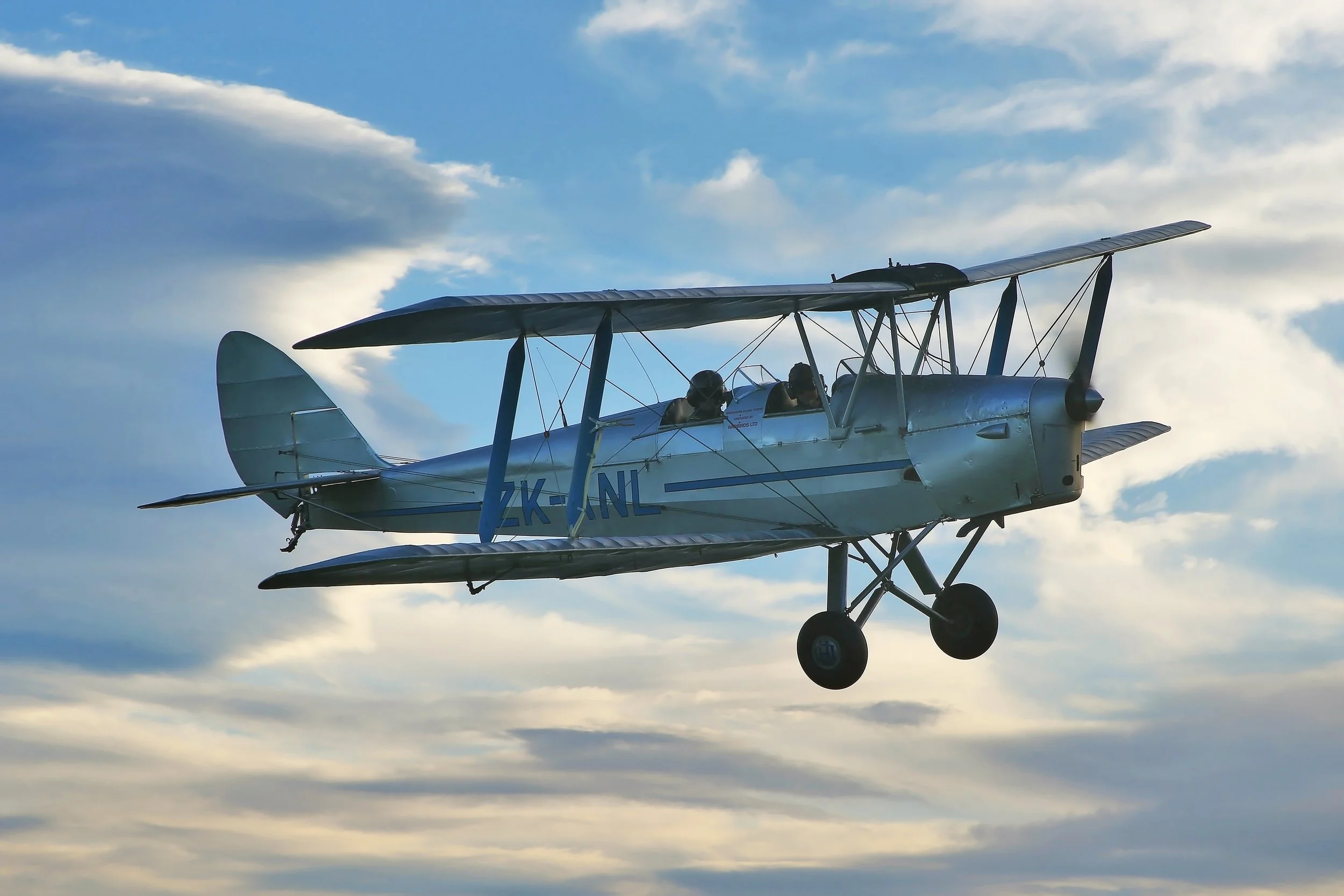
DE Havilland Tiger Moth
The de Havilland Tiger Moth holds a special place in New Zealand’s aviation story during and after the war.
Hundreds were imported by the Royal New Zealand Air Force during World War II, becoming the backbone of pilot training.
After the war was over, many of these biplanes were sold into civilian hands, where they helped establish aero clubs, pioneered aerial agriculture, and earned a reputation for being both charming aircraft and a challenging training aircraft for students.
At the time, parts were relatively easy to come by, labour was cheap, and knowledge was abundant. The Tiger Moth was seen as one of the most cost-effective aircraft for both flight training and agricultural work - cheap to own, run, and maintain, and simple to operate. It could carry a relatively large load for its size, and in the event of an accident, the aircraft itself essentially became the crumple zone. With the pilot seated well aft of the fuel tank, they were surprisingly safe to fly in the high risk world of low level aerial spraying and top dressing.
A HISTORY OF ZK-ANL
ZK-ANL began her life in England in 1939 and arrived in New Zealand in early 1940, where she was assigned the RNZAF serial NZ861. She served primarily with No. 1 Elementary Flying Training School at Taieri, training new pilots throughout the war.
In late 1944, she was placed into storage before being officially disposed of by the Air Force.
In her postwar civilian life, NZ861 became ZK-ANL and joined the Hawke’s Bay and East Coast Aero Club, where she gained a reputation for excellence in competition flying, earning the affectionate nickname: “Pot Hunter’s Special.”
In aviation circles, a “pot hunter” refers (somewhat cheekily) to a pilot who consistently wins flying competitions - especially those offering trophies, or “pots.” ANL’s impressive track record at club competitions and flying events made her a favourite for bringing home the silverware, and the nickname stuck!
In 1960, ANL was converted for agricultural work as an aerial sprayer - a role she continued in for two decades and on 28 December 1980, she completed her final commercial spraying flight, earning the remarkable distinction of being the last Tiger Moth in the world to operate as a commercial sprayer.
Since retiring from commercial service, ANL has remained in the air thanks to a string of dedicated private owners across the lower North Island. We were lucky to have her join the Legend Aviation fleet in July 2023, and continue to operate her for our adventure aviation rides.
We have exciting plans in the works for a fresh new paint scheme that will celebrate ZK-ANL’s rich history and character. Watch this space!
To check out our various flight experience options please visit our Flight options page

